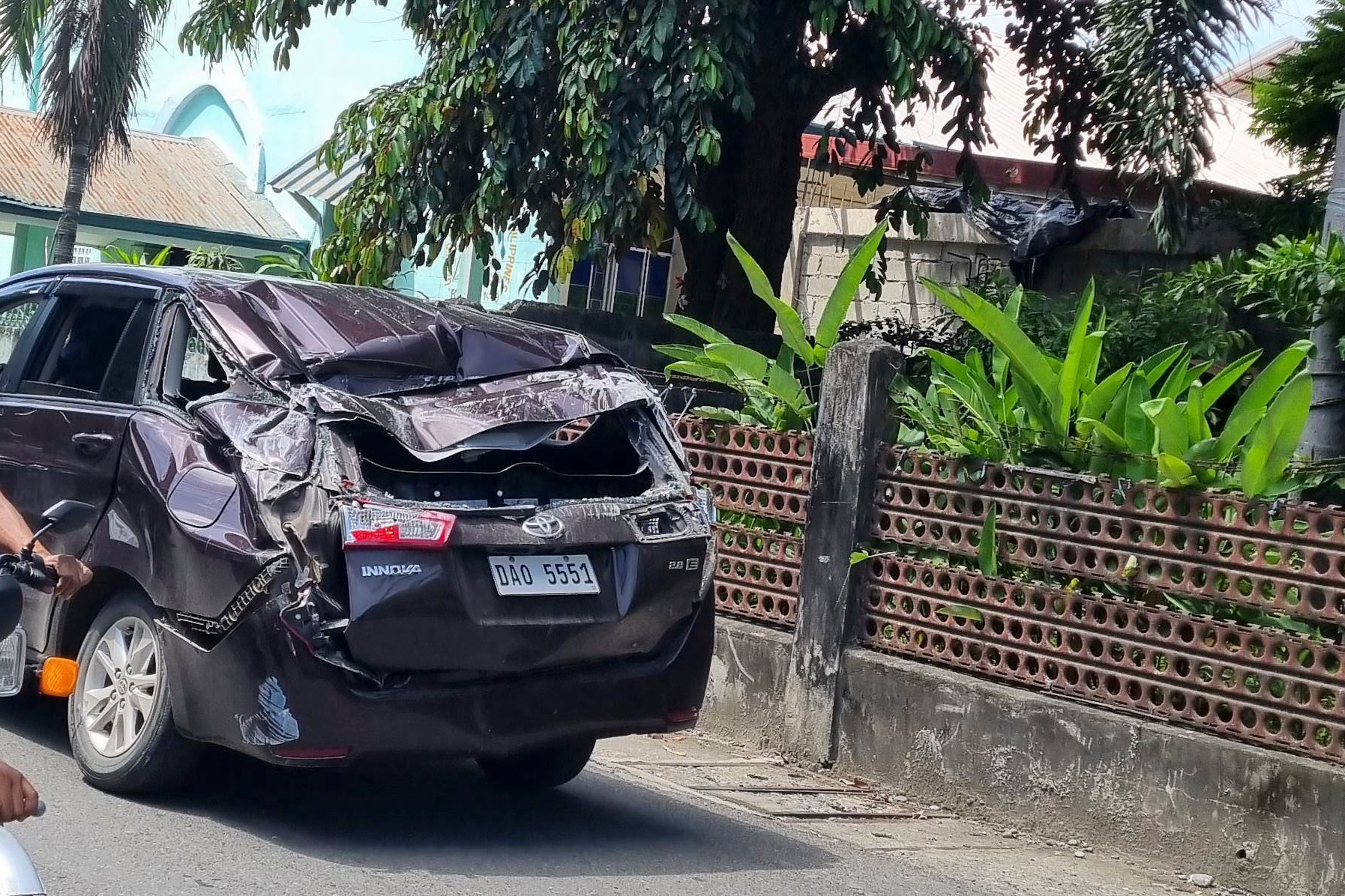Philippines president orders rescue as 7.1 magnitude earthquake kills at least four
USGS says earthquake occurred at a shallow depth of 10km
Your support helps us to tell the story
From reproductive rights to climate change to Big Tech, The Independent is on the ground when the story is developing. Whether it's investigating the financials of Elon Musk's pro-Trump PAC or producing our latest documentary, 'The A Word', which shines a light on the American women fighting for reproductive rights, we know how important it is to parse out the facts from the messaging.
At such a critical moment in US history, we need reporters on the ground. Your donation allows us to keep sending journalists to speak to both sides of the story.
The Independent is trusted by Americans across the entire political spectrum. And unlike many other quality news outlets, we choose not to lock Americans out of our reporting and analysis with paywalls. We believe quality journalism should be available to everyone, paid for by those who can afford it.
Your support makes all the difference.At least four people were killed after a powerful 7.1 magnitude earthquake struck the Philippine island of Luzon on Wednesday, damaging a hospital and buildings and sending strong tremors through capital Manila.
A 25-year-old man was killed by falling debris, said Abra vice governor Joy Bernos, when the quake struck about 11km southeast of Dolores town at a shallow depth of 10 km.
The quake was set off by movement in a local fault at a depth of 25km, authorities said, adding they are expecting more aftershocks.
A construction worker died after being hit by debris in the mountain town of La Trinidad in Benguet province. Several roads were cut off due to landslides and boulders.
Five people sustained injuries when rocks pummelled their cars and trucks in the nearby Mountain province.
A hospital in Abra province was evacuated after the building partially collapsed, but there were no casualties, officials said. Several houses collapsed while others developed cracks on the walls in the aftermath of the earthquake in Abra.
Ms Bernos shared the photos of the damaged hospital on her social media account, which showed a gaping hole in the front entrance facade.
“We are still experiencing aftershocks. We have received reports of damages to houses. But so far no casualties,” said mayor Rovelyn Villamor of the town of Lagangilang in Abra. He added that the power supply was automatically cut off due to avoid any danger.
Abra, a landlocked province in the northern Philippines, is home to nearly 250,000 people.
Newly-elected president Ferdinand Marcos Jr has ordered the immediate dispatch of rescue and relief teams to the earthquake-affected province of Abra. He is also expected to fly to the quake-hit province to take a stock of the situation.
“Despite the sad reports about the damages caused by the earthquake, we are assuring quick response to those in need and affected by this calamity,” Mr Marcos Jr said on Facebook.
The president said he was in his office at the Malacanang presidential palace when the chandeliers began swaying. “It was very strong.”
In Manila, several buildings were evacuated, with some people forced to flee from the 30th floor.
“The ground shook like I was on a swing and the lights suddenly went out. We rushed out of the office, and I heard screams and some of my companions were in tears,” Michael Brillantes, a safety officer of the Abra town of Lagangilang, near the epicentre, told Associated Press.
“It was the most powerful quake I’ve felt and I thought the ground would open up.”

Renato Solidum, director of the state seismology agency said strong aftershocks were expected.
“The focus of attention is on Abra and nearby provinces. This is a major earthquake,” Mr Solidum told DZRH radio station, adding landslides had been reported in some parts of Abra, particularly in the town of Manabo.
“The earthquake lasted 30 seconds or more. I thought my house would fall,” congressman Eric Singson told the radio station.
“Now, we are trying to reach people .... Right now there are aftershocks so we are outside our home.”
The Philippines lies along the Pacific “Ring of Fire” and has witnessed some of the most severe earthquakes in the world.
In 1990, a magnitude 7.7 quake killed nearly 2,000 people in the northern Philippines.

Join our commenting forum
Join thought-provoking conversations, follow other Independent readers and see their replies
Comments